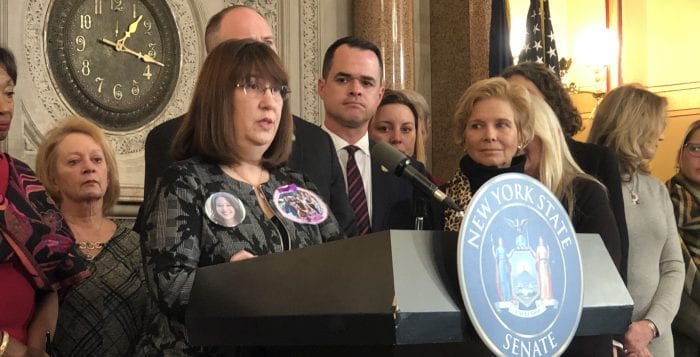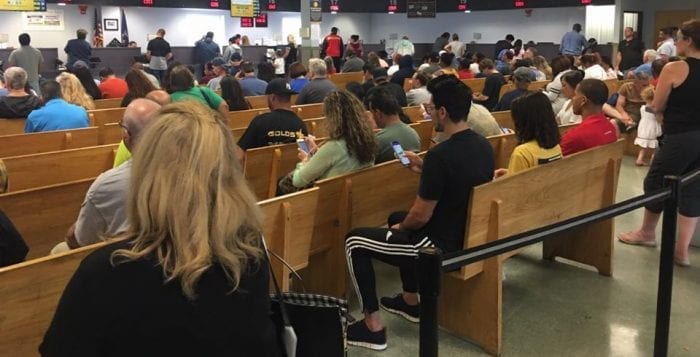Despite a recent setback, mornings still look bright for one East Setauket resident.
A familiar voice on Long Island radio for more than 30 years, Mark Daniels was notified he was being let go as co-host of WALK/97.5FM’s “Mark and Jamie Mornings” right before Thanksgiving.
But with the start of a new year, the radio host embarked on a new adventure Jan. 2, launching the podcast, “Breakfast with Mark Daniels,” right from his East Setauket home.
Daniels said the 10-minute installments will be Long Island focused and told in a storytelling format. Subjects will range from pizza to the railroad.
“I always try to relate something to Long Islanders that Long Islanders call their own, and I think keeping it that way and keeping it local provides that relatability that folks in Nassau and Suffolk have to one another and to living here,” Daniels said.
A recent podcast featured the radio host’s recent adventure into the city on a day when the Ronkonkoma Branch railroad line was undergoing construction. He said he and his family headed to the Babylon station, “but so did the rest of the planet east of Babylon.” Fortunately, they were able to get a parking spot.
The idea of a podcast came about when some friends suggested he reinvent himself. In the future, Daniels said he hopes to build a big enough base to attract advertisers.
“It’s evolving every day,” he said.
An East Setauket resident for 21 years, Daniels and his wife Marianne have three children, Mark, Brian and Allison, who have grown up in the Three Village school district.
The radio host originally commuted to Patchogue for his on-air duties for WALK, and then after Connecticut-based Connoisseur Media purchased the station, he traveled to their Farmingdale studios.
While the commute may have been longer for Daniels once the studio was moved to Farmingdale, it was a job he always enjoyed.
“It is a lot of fun to be on the air and to talk to your co-host about topics, and the immediate listener response is just incredible,” he said. “It’s just so much fun. It was like a playdate every time I was on the air. I’m trying to keep that going on the podcast.”
He said among his favorite memories is collecting donations for the food bank Long Island Cares, where listeners would often contribute so much there was no room to store the contributions at the station. He also loves appearing in The Ward Melville Heritage Organization’s Walk for Beauty in October. He said the community’s response to such causes is overwhelming.
“To me, that’s what radio is really about,” the broadcaster said. “It’s about people. When you put out a call to attend and support, people show up, and people show up in large numbers.”
While Daniels said he is not at liberty to comment on his exit from WALK/FM, he added he wasn’t surprised when he heard at the end of the year that WALK would broadcast the same morning show as Star 99.9, “The Anna & Raven Show,” which is broadcast from Connecticut.
“It’s a business decision and that’s what they chose to do, and that’s what I have to live with, and I have to pick up and move on,” he said.
This week Connoisseur Media also announced Daniels’ most recent co-host, Jamie Morris, will now head K-JOY’s morning show.
Daniels said he couldn’t believe the amount of support he received on social media after the news of his dismissal was announced, and he admitted it gave him goose bumps.
“I really only think of myself as just a guy that goes in, does a job and has a lot of fun with it and enjoys it, and then I’m home,” he said.
The radio host said his podcasts can be found every weekday on the “Breakfast with Mark Daniels” Facebook and Instagram pages, Spotify, Apple podcast and Buzzsprout.com.




































